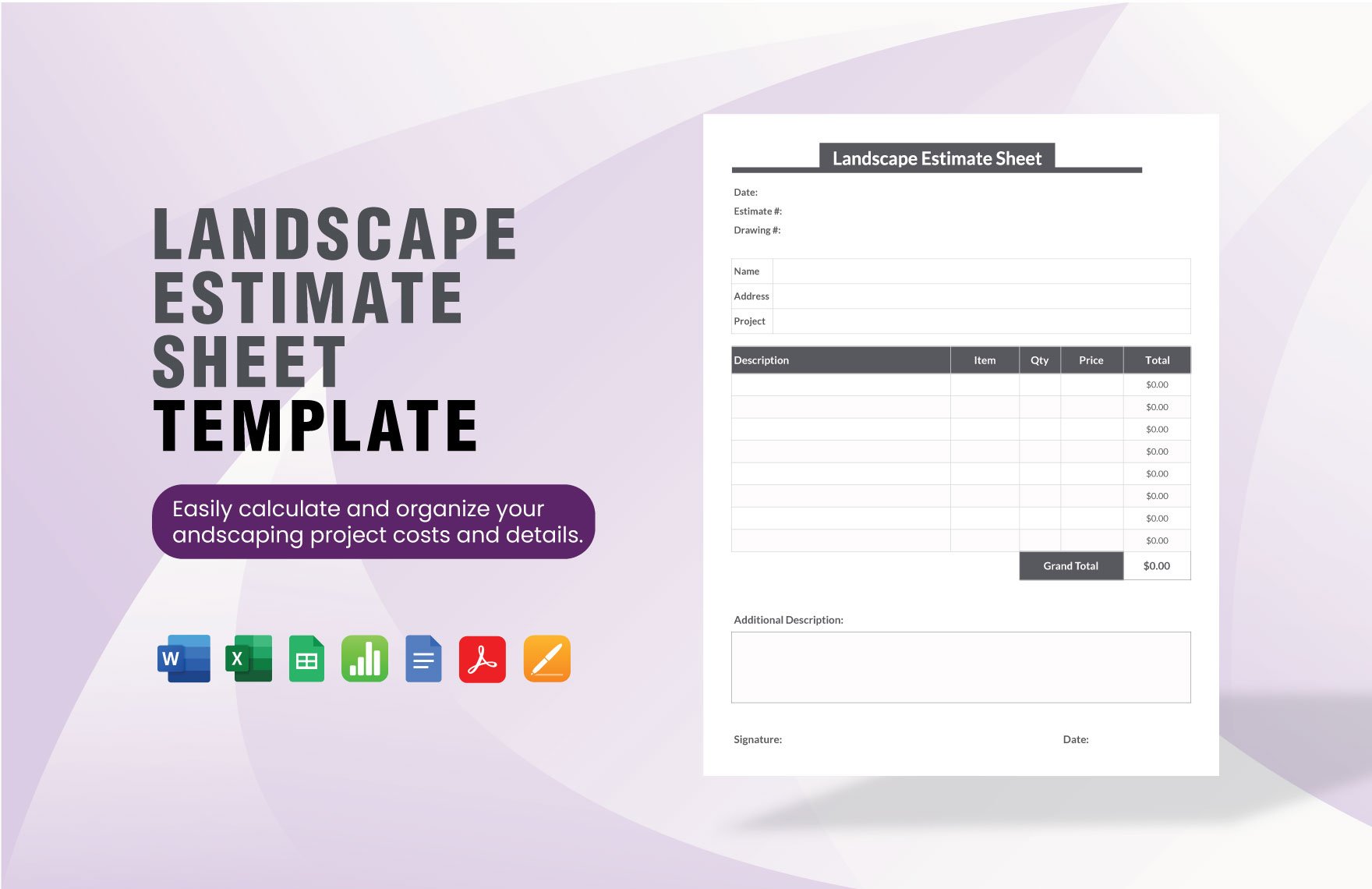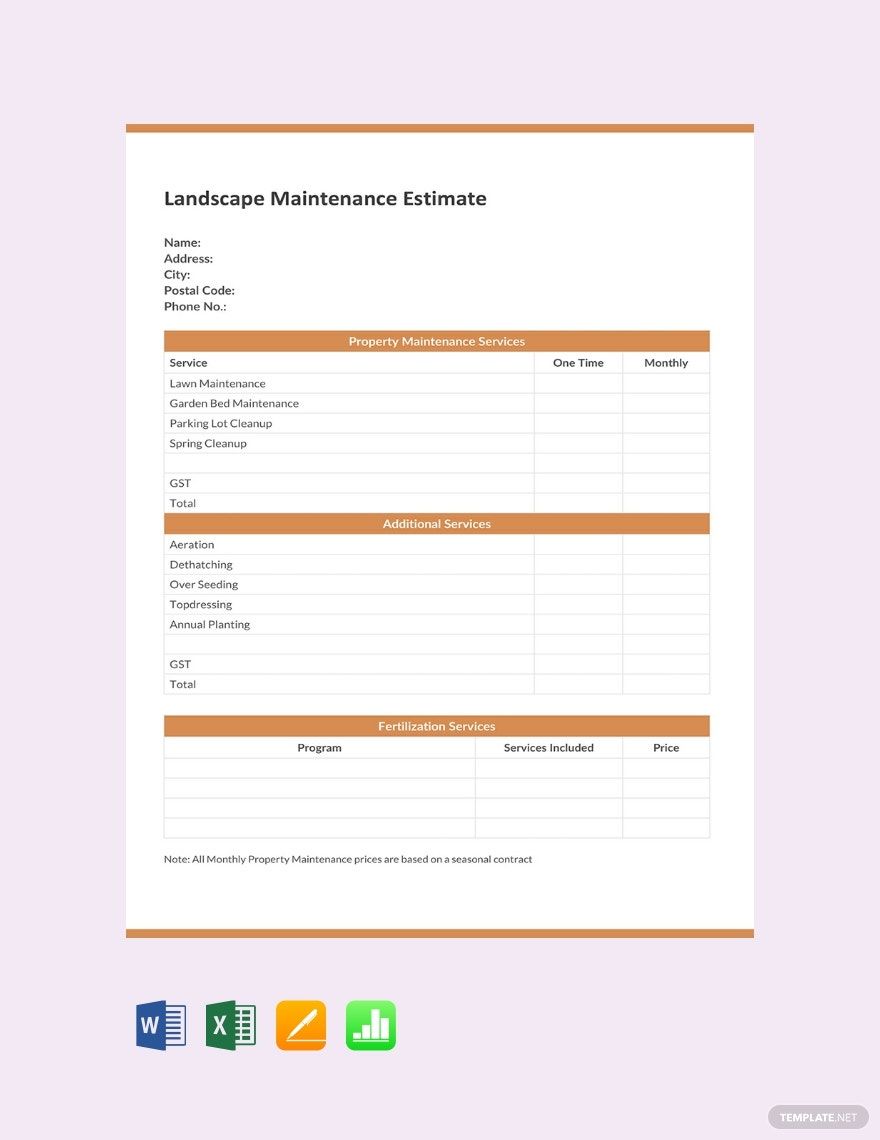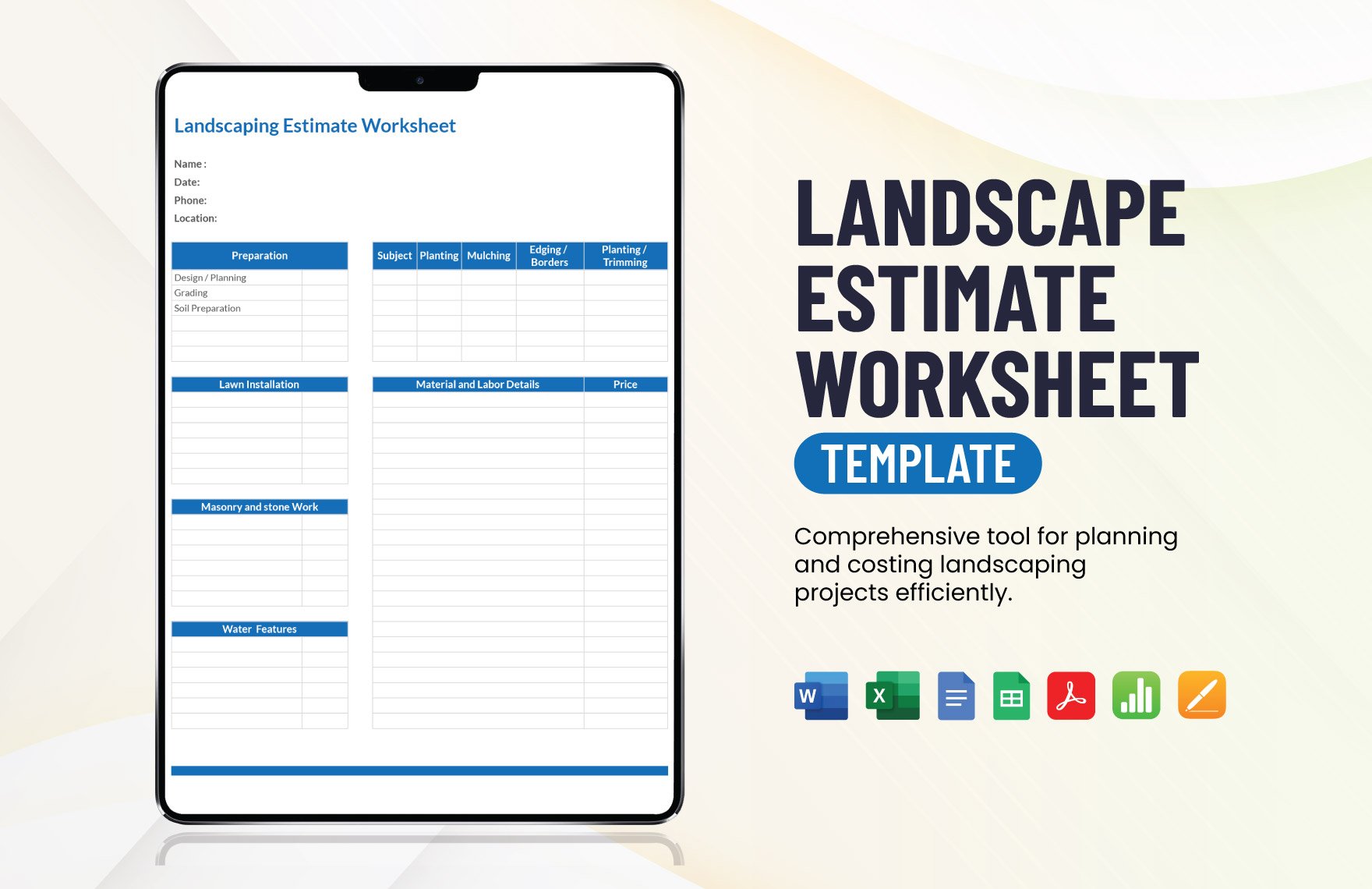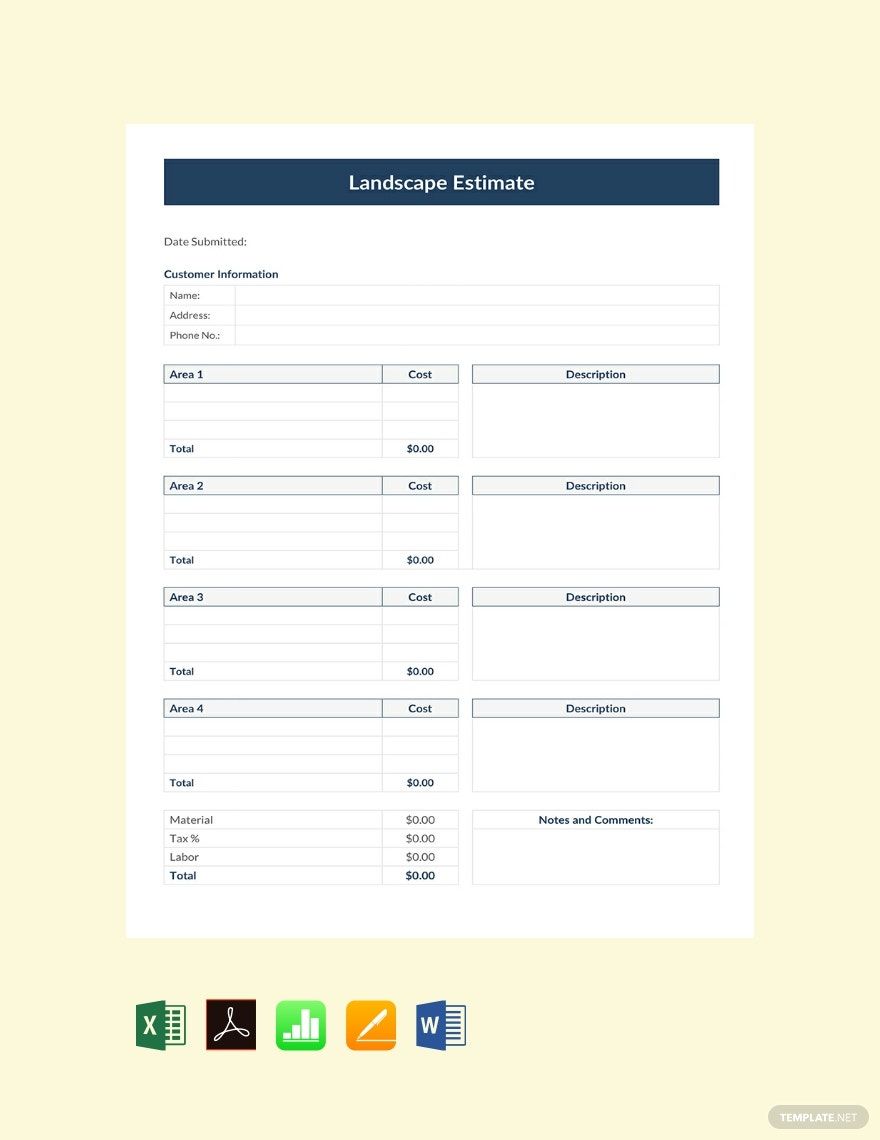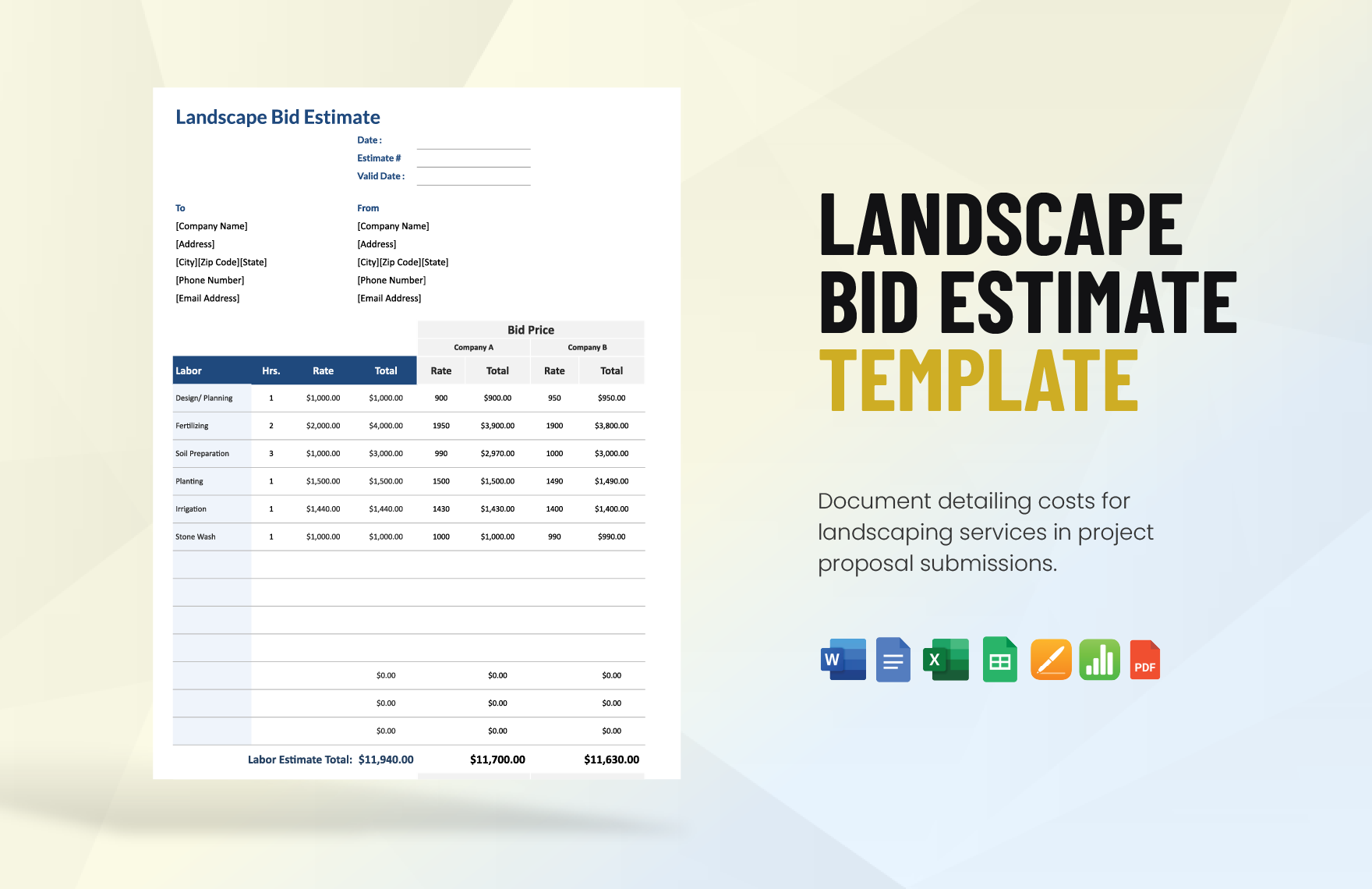Landscaping is more than just lawn mowing, it’s about beautifying one’s yard to make it look presentable to guests. To become a professional landscaper, you need to possess creativity and other essential skills. If you’re into this business and you need to gain your client’s trust, we recommend preparing credible job estimates. Thankfully, you no longer need to start from scratch with the help of our Landscape Estimate Templates in Excel. With professionally written content and an easily editable layout, you’ll save yourself the hassle. So, make the task of writing estimates more convenient by subscribing to our templates!
Landscape Estimate Templates in Excel
Explore professionally designed landscape estimate templates in Microsoft Excel that are free, customizable, and printable. Download now.

Get Access to All Estimate Templates

How to Prepare a Landscape Estimate in Microsoft Excel
According to the website, IBISWorld, the landscaping business in the US has grown by 3.3% over the past 5 years. With the rise of this industry follows a lot of competitors, which means you need to employ strategies to attract new clients and retain old ones. One way to build your credibility is through your estimates, and we have tips below to help you in making them.
1. Ask Your Client to Describe the Job
First and foremost, you need to know what the job entails in order to come up with an estimate. While it’s always better if the client already knows with what they want, there are times wherein they are undecided. If this happens, then you can always ask questions and give suggestions to help them decide.
2. Write a Comprehensive Break Down of the Tasks
Based on the details you gathered from your client, start making a list of the tasks. Break down the tasks and make it as comprehensive and straightforward as possible. Depending on the job, you may include landscaping, lawn care or lawn service, and garden maintenance.
3. Identify the Necessary Resources or Equipment
Part of business estimates is a section that explains what resources you need to get the job done. Almost always, this section will include a lawnmower, garden shears, and a shovel. Include all the resources you think are important to help you in completing the tasks, and don’t forget to indicate the corresponding prices.
4. Look into Your Competitors as References
One way to determine if you're pricing your services reasonably is by looking into your competitors. Use this as your reference as to the prices, services, and other matters. How will you know if your business is more superior if you’re not comparing it with others? Take advantage of your cost estimates to convince clients that your service packages are better.
5. Ensure a Polished and Neatly Presented Estimate
Your document needs to look professional and understandable right off the bat. Doing so will make your landscaping business look credible. Thankfully, Microsoft Excel has all the features you need to create a well-structured estimate. Lastly, make sure the content is fully legible.
Frequently Asked Questions
What is a landscape estimate?
A landscape estimate is a document that lays out a rough computation of landscaping services. Factors considered here include the size of the lawn, equipment used, and the number of hours or days to complete the task.
What are the benefits of writing job estimates?
- It helps in identifying risks.
- It allows the client to choose from alternatives.
- Ensures that the project is within budget.
What services are commonly offered by landscaping industries?
- Weeding, removal of debris, and grass trimming.
- Pruning of trees and shrubs.
- Plant installing and designing.
- Lawn maintenance and repair.
How much does a client usually spend on landscaping services?
According to the website, Fixr, a client will have to spend a total of $14,000 on landscaping services. In terms of range, the minimum amount that a client will spend is $3,000 while the maximum amount is $30,000.
How much has the landscaping industry earned in recent years?
According to Statista, landscaping in the US has earned a total profit of $99 billion in 2019, which is bigger than the $69.8 billion generated in 2013.

